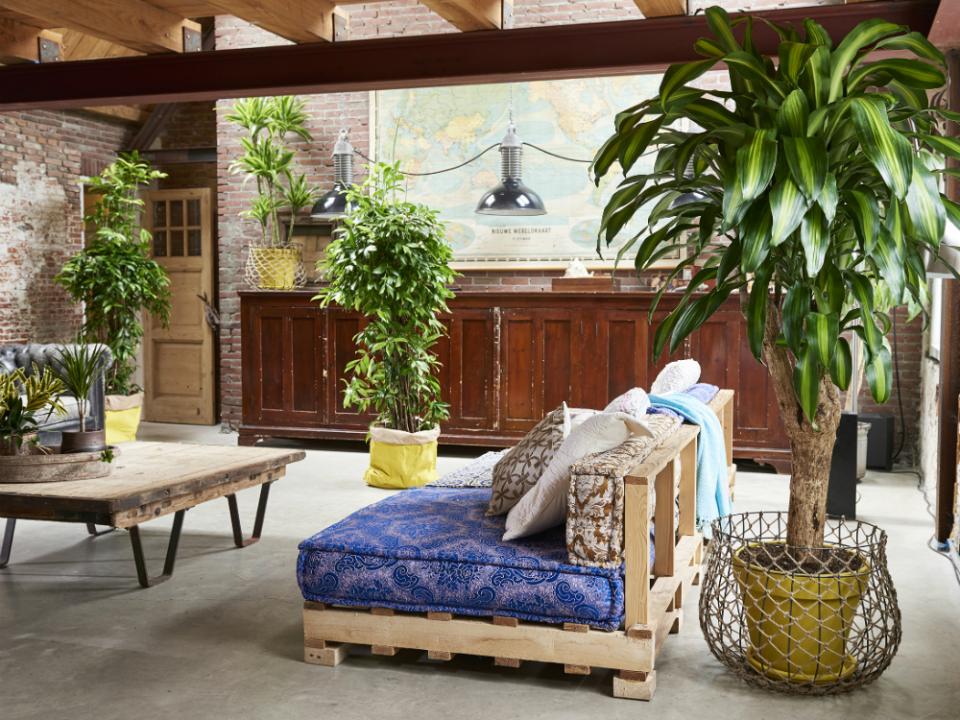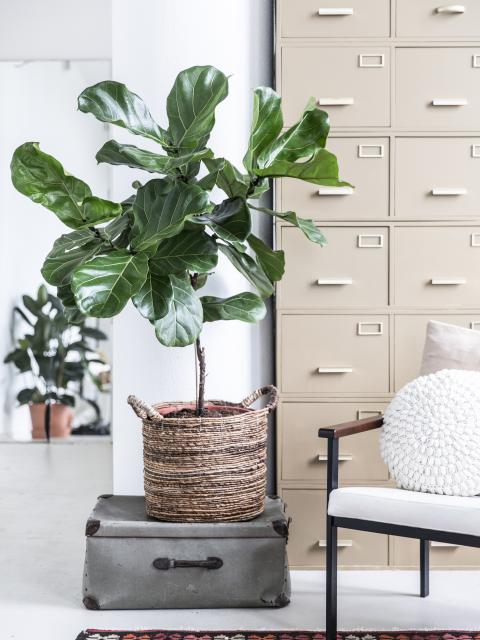Colours and shapes
Dracaena is a tall, full houseplant or tree with one or more trunks from which fantastic leaves in green, yellow and gold emerge that can have touches of pink or red around the edges. There is a wide choice of leaves, ranging from small, narrow and pointy, to large and soft. What all the species have in common is that they’re amazing plants that suit any interior style, and they’re easy to look after. The plant stores moisture in its trunk and can therefore cope with you forgetting to water it occasionally. The somewhat palm-like shape means that this houseplant adds a rugged, tropical feel and lends an exotic touch to any interior and it mixes well with other indoor trees with smaller leaves. The plant also helps to keep things clean in your home. According to the NASA Clean Air Study, Dracaena is a powerful air purifier and is available as a smaller houseplant, but also as an indoor tree. Dracaena is also used as a garden plant in the tropics.
Symbolism
The name Dracaena is derived from the Greek 'drákaina', which means female dragon. This refers to the resin of the draco variety, which is bright red and from the names such as dragon tree and dragon’s blood plant come. The resin is used in the paint industry. The plant is the botanical symbol of Tenerife. Icod de los Vinos is home to one of the largest and oldest dragon trees in the world called El Drago Milenario (the thousand year old dragon). That’s a slight exaggeration, as the plant is probably between 250 and 350 years old.

Origin
In the wild Dracaena grows well in Africa and adjacent islands such as Madeira, the Canary Islands, and the Cape Verde Islands, although there are also a couple of species in southern Asia and one in Central America. There are varieties which definitely look like a tree with a trunk, but there are also robust bush shapes. They can reach a ripe old age, and some species develop a very unusual shape in the wild that look positively primeval. The plant has been around in the West since 1752 and has been popular as a houseplant since 1880.













